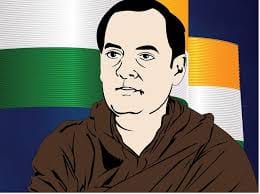It was sometime in mid 1985 in Delhi when I dropped in to see Rajiv Gandhi.

In those days, I was working as National Service Manager for a leading IT company, PCL, and Rajiv Gandhi had recently become one of our biggest customers. We were a leading brand to introduce electronic typewriters into India and he had recently bought five machines, one for his home and the other four for other offices of the Prime Minister.
It has always been part of my routine to make periodic visits to check on customer experience, something I still do and encourage others to as well. The account sales manager, V Shankar, set up a meeting and we arrived at No 7 Race Course Road. I still remember the four levels of security we went through, and the feeling of self-consciousness as we walked to the house, knowing that cameras were focussed on every step we took, and clutching our security passes in the fear that if we lost them we would never be let out of this place! Indira Gandhi had been assassinated just a few months before.
We had arrived early, so sat in the waiting area outside his office, and were taken in at the appointed time. As Rajiv Gandhi greeted us, I could see the typewriter next to him. We were struck by his charisma and dignity. Many business leaders (including Dhirubhai Ambani) and senior bureaucrats (including the RAW chief) had been my customers in the past. However, the typewriters they purchased were used by their secretaries and the calculators by their chief munims (or CFOs as they are called these days). This was the first time that the person was a user himself. From the conversation it was clear that he was hands-on and understood the product well. I was impressed with his personality and proud to have someone like him as the Prime Minister of India. Looking back and comparing him with leaders of today, I realise that this was not a PR activity, and he was not boasting about what he was doing.
Rajiv Gandhi understood technology and knew that it was the key to progress in India. It’s a historical fact that his government struggled to stand up to the dissenting voices that warned doom to the labour of this country. He faced the threats with courage and laid the foundation that made India the IT powerhouse it is today. India’s IT revolution, which soon led to the collapse of the stifling ‘License Raj’, would have manifested in a very different way if Rajiv Gandhi hadn’t taken bold steps to bring technology to India the way he did.

You must be logged in to post a comment.